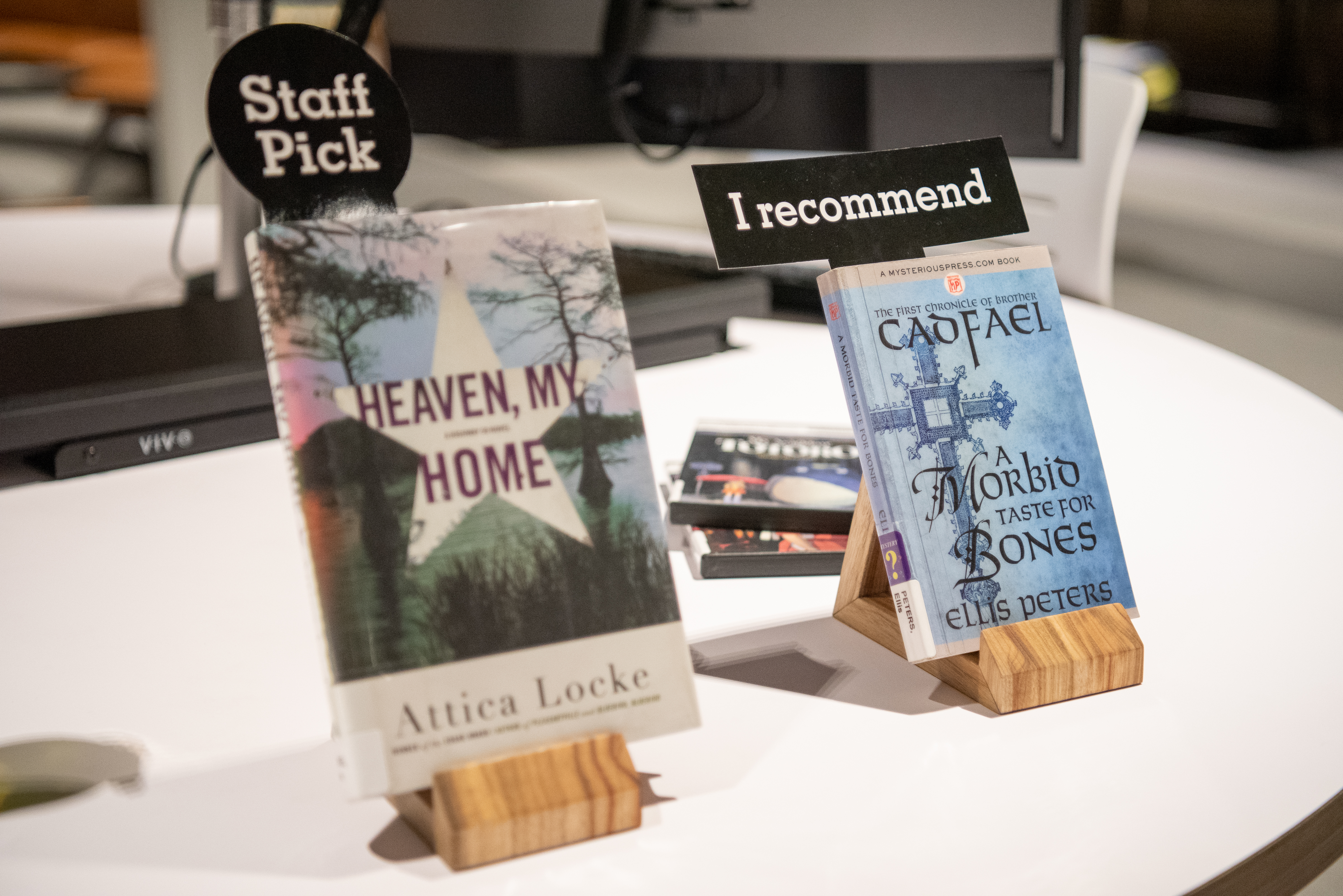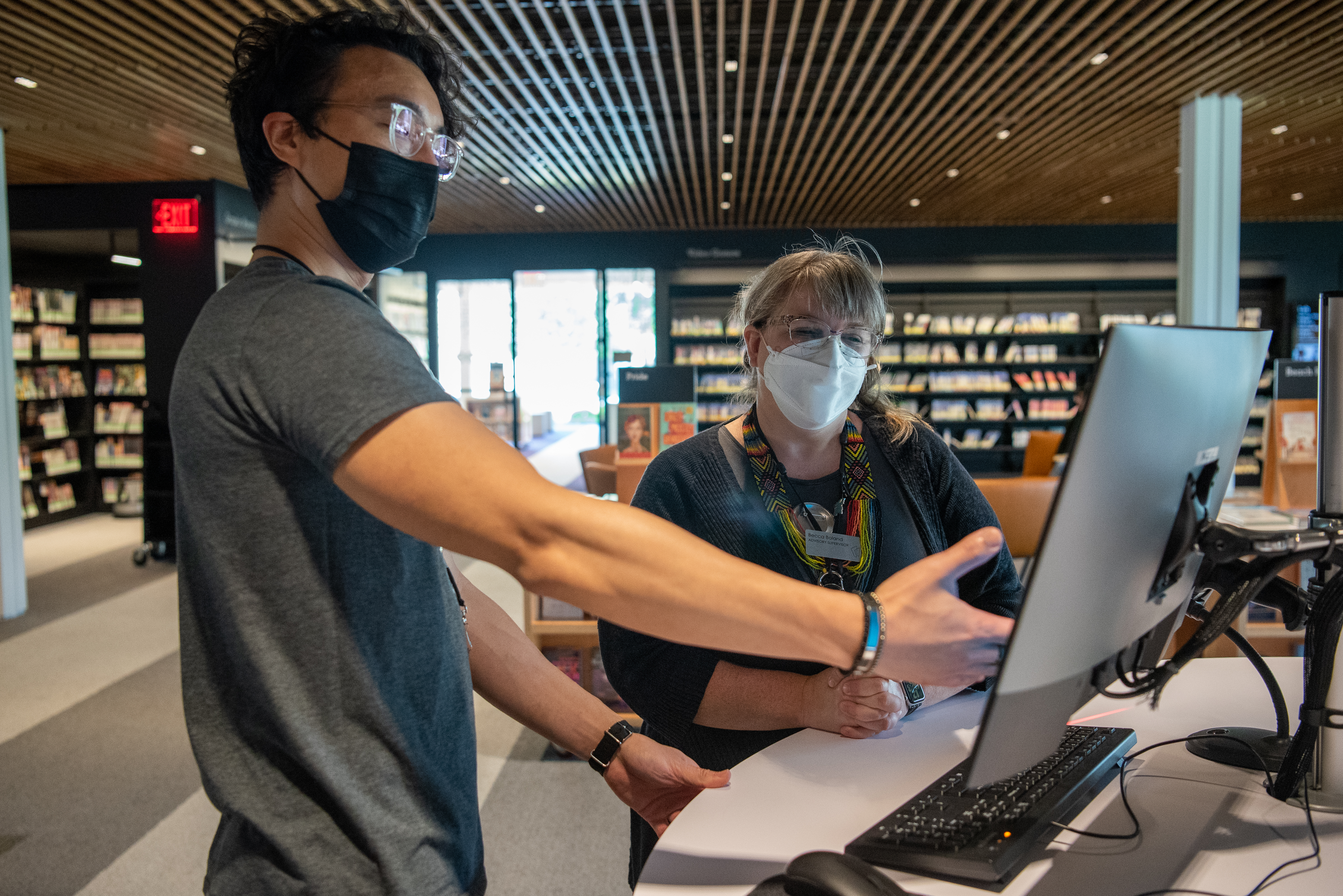Choosing the Perfect Book or Movie: A Look at Advisory
September 30, 2022

By Paul Kim and Elise Damasco
The art of recommending titles can be mysterious for many people. How do we find the right book or movie for you? Do people even ask for recommendations any more? Have we read every book in the library?
Though one can dream, none of us on the Advisory Services team has read every book in the library, and yes, we receive many recommendation requests in a variety of ways. Whether in person, through forms like Bookmatch and Screenmatch, staff lists, or through social media like Instagram, we are constantly working individually and as a team to connect patrons with titles that we hope they will love.
So, if we haven’t read every book or watched every movie in the library’s collection, how do we make our recommendations?
We are fortunate to have such an amazing team. Everyone holds a wealth of knowledge when it comes to books, movies, TV shows, and graphic novels. Often, we lean on our knowledge and make a recommendation in real time. Other times, we collaborate on a list specific to the patron’s request with our Bookmatch service.

Staff members Paul and Becca collaborating on a book recommendation
Even with our existing expertise and teamwork, there are sometimes gaps we have to fill. We may be asked to make recommendations in a genre that we haven’t had the most experience with; this is where the research muscle of librarianship comes into play.
We use many resources to help identify the content of titles that may fit a patron’s interests. Using these resources, we can find common threads among different titles and, from there, pinpoint potential matches.
Some of these resources are:
- NoveList Plus: database of book recommendations and information
- Goodreads: a social media and cataloging site for book reviews and recommendations
- Book Marks Reviews: a collection of critical book reviews and ratings
- LitHub: a daily literary website with a variety of content on fiction and nonfiction works
When searching for recommendations for patrons, we keep a few key things in mind.
First, we narrow down our options to the format that the patron would like to read or watch. Books, for example, can come in a variety of formats: physical books, eBooks, audiobooks, large print, or graphic novels. Movies and TV shows also have different format options, such as DVD, Blu-ray, and streaming.

After limiting possible titles by format, we can then get into the more personal part of the recommendation process: the content. Patrons often give us a range of information to help us find what they are looking for, whether that be something very specific like “historical fiction about early 20th century England” or more broad like “page-turners.” We can help look for recommendations by exploring a patron’s favorite genres; books or movies they’ve already enjoyed; titles with certain themes, characters, locations; or even by asking what they don’t like to read. We ask ourselves questions like “are characters being authentically represented?” and “is the writing style consistent with the patron’s preferences?” All of this is crucial in making an informed decision on a recommendation, before presenting it to the patron.
In addition, part of our job is to introduce patrons to voices they may not be familiar with. If we receive a request for books similar to a particular author, we would not provide more titles by that author. Instead, we would introduce the patron to a diverse and robust group of authors or titles that hold many of the same elements.
Readers’ and viewers’ advisory are not exact sciences, and sometimes we may give recommendations that miss more than they hit. However, our job is less about getting it right all of the time and more about doing the work until the patron receives what’s right for them. Can this work be scary? Surely. But connecting someone to their next favorite book, movie, or TV show? There are few things more beautiful than that.